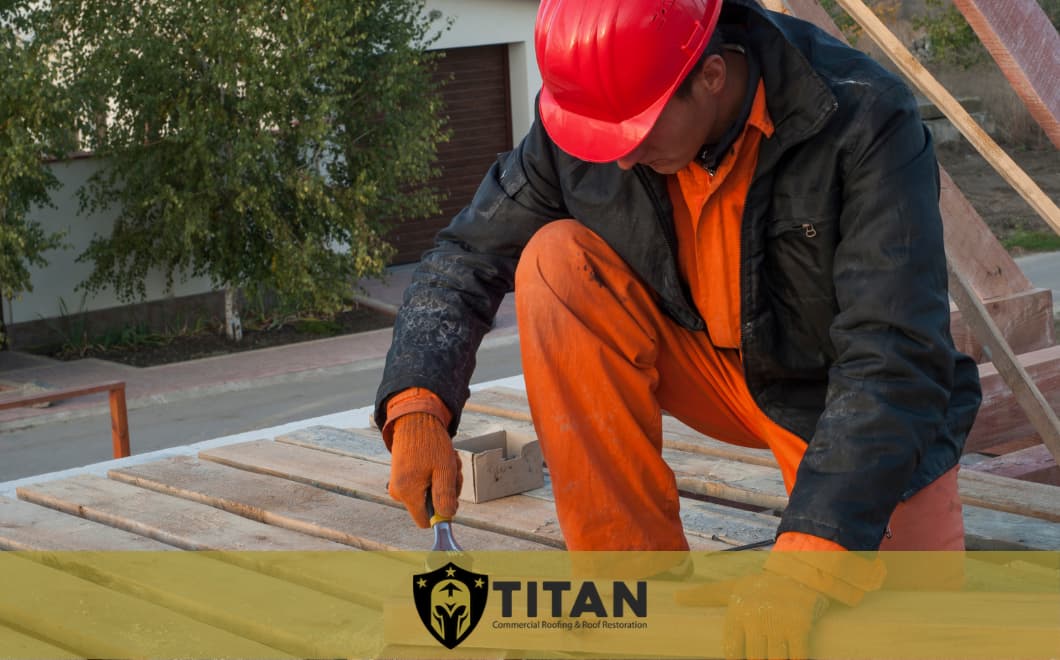Don’t really feel comfortable talking to your roofer because you feel you don’t fully understand all things roofing?
Well, the next time you talk to them, you won’t have to pretend you understand them or feel uncomfortable. You’ll know what they’re talking about.
You won’t freeze the next time you hear “Talk roofing to me” because you’ll have all the terms in your toolbelt.
How?
We’ll equip you with all the roofing terms you need to talk to your roofer about your roofing needs with confidence. So make sure to read on!
Deck/Sheathing
This is the layer of the roof on top of which all other layers are installed. Nowadays, it’s usually made from OSB.
Imagine LEGO… You know those big green pieces you use to start building castles on them. The deck does the same for your roof. It’s the basis that provides roofers an area to build on.
Underlayment
Underlayment is a sheet of asphalt-saturated material used to protect the roof deck.
Imagine your roof as human skin. It has layers. The underlayment protects the deck in case water penetrates the outer layers.
Rafter
Rafter is the supporting framing that holds the roof deck.
If the roof deck is the inner layer of the skin, the rafter would be the ribs.
Flashing
Flashing is a sheet metal placed at junctions on a roof that prevents leakage.
Imagine flashings as raincoats for the most vulnerable parts of your roof, such as around chimneys, skylights, valleys, and other similar areas.
These are the areas where many leaks start when the flashing is broken or not installed properly.
Counterflashing
Counterflashing is a sheet metal in the form of an inverted L bent down over the flashing to make it watertight.
Imagine it as a super-tight umbrella for your flashings.
Courses
Courses are horizontal rows of shingles or tiles.
This one is already simple, but you can imagine courses as rows of dominos because when one shingle falls out, others don’t wait too long before following it.
Fascia
The fascia is the board behind the gutter and eaves.
Imagine this simple roof part as a water dam. Its mission is to keep water away from your house and direct it into the gutters.
Drip Edge
The drip edge helps redirect water from the fascia into the gutters.
Imagine it as a traffic policeman who shows the way to rain and helps protect your house from water damage.
Eaves
The eave is the lower edge of a roof.
Look at your nails. Imagine the parts you cut off as an eave. Next time you look at your house, you’ll see it as a big tumb.
Dormer
A dormer is a small structure on a sloped roof, usually with a window.
It is a great addition to your roof when you want to expand the usable space under your roof or in your loft.
Fire Rating
Fire ratings tell you how effective your roof is against fire coming from the outside of the house.
There are three classes of this rating – Class A, B, and C, with C being the lowest one. A Class A roof would, therefore, be the most resistant type of roof, and recommended to homeowners living in wildfire-prone areas.
Gable
Gable is the triangular end of a building from cornice to ridge.
Do you know how kids (and many adults) draw a house? A square with a triangle on top. Gable is that triangle on top.
Penetrations
Penetrations are all roof elements that come out of and through the roof deck, such as chimneys, vents, pipes, skylights, and similar.
Rake
A rake is the inclined edge of a roof over a wall.
Imagine your house as a head and your roof as a baseball hat. In that case, the bill of the cap would be the rake.
Ridge
Ridge is the top edge of two intersecting sloping roof surfaces.
Imagine you’re building a house out of poker cards. When you put cards together to make a small triangular house, there’s always some space between them. The ridge comes on top of that space and seals it.
Slope
The slope is the rise in inches for every 12 inches of a horizontal run of the roof. Basically, it’s the angle of your roof, designating how pitched it is.
Valley
Valley is the area at the intersection of two sloping roof surfaces.
Valleys are vulnerable to leaks because they are like river beds for rain. If shingles aren’t in perfect condition, water will soon test your underlayment.
But when it comes to your roof in Jackson, TN, you don’t have to worry because you can count on your #1 roofers Jackson TN to take care of it properly. From the first inspection to the last nail, Titan Roofing & Construction has got you covered, so give us a call anytime!

